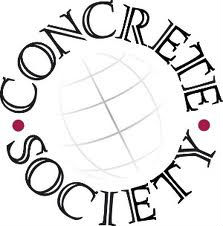FAQs
Why should I use an armoured joint?
Armoured joints have several benefits:
they act as permanent formwork and as day joints, helping to speed up the process of the concrete pour, and ensuring a reliable result;
they control the movement of the concrete as it contracts, preventing random cracks from occurring in the slab;
they protect contraction and expansion joint arrises from damage once the building is in use, preventing costly repairs to both the floor and materials handling vehicles;
they facilitate load transfer between the two sides of the slab, so the slab remains consistent and even during use
How do armoured joints work?
Armoured joints are constructed with two sides, held together with frangible rivet connectors. The joints are placed on the ground to create a framework, each bay large enough to contain a day’s concrete pour (hence the name “day joints”). As the concrete sets and contracts, the two sides of the joint are gradually pulled apart horizontally. Dowels fixed through the centre stop the slabs moving vertically and allow for load transfer between the two sections of the floor slab. The joint remains in the floor to provide protection (armouring) for the concrete arrises.
What’s the difference between permanent formwork and an armoured joint?
Permanent formwork isn’t necessarily an armoured joint. Some permanent formwork will provide a day joint for the concrete pour, but won’t provide arris protection. Typically you can use formwork for areas which won’t receive much traffic, such as the perimeter edge of the slab. But where there’s likely to be more traffic, it’s important to choose an armoured joint which will also provide joint arris protection and load transfer.
In our Product section we’ve separated armoured joints from formwork, so it’s clear which benefits each product will give.
How do I know which armoured joint to choose?
This will depend on several things, such as the type of building, how it will be used, and the type of vehicles that will pass over the joint. In our Product section you will find a product selector, and also a quick guide to our armoured joints available as a download. You can also call our technical engineers for help. Often there will be more than one suitable option, and it may also be that more than one kind of armoured joint or formwork is needed for your project. We can help you find the best combination.
What height of armoured joint do I need?
This depends on the depth of the concrete slab being poured. Normally you would choose a rail size 30mm less than the depth of your slab –so if your nominal slab depth was 190mm you would use a 160mm high joint.
Our AlphaJoint Classic 4010 has a Universal Divider Plate, so its height can be adjusted on site. Permaban Wave has an extension plate for the same purpose. This makes it easier for contractors to use the same product across different job sites. Please refer to the relevant product pages for more details.
Why are the joint heights less than the slab depth?
Firstly, it's to allow for variances in the sub-base. The sub-base usually has a tolerance of +/-1cm; so if the sub-base is created slightly out of tolerance, there is still space for the joint to move freely. The joint will not work if it is dug into the sub-base. Secondly, it gives a tolerance for levelling the surface.
Which way up are Permaban joints installed?
All Permaban joints are designed to allow a gap underneath them. This means that the dowel within each product is set below the centre-line of the joint. If you are unsure, you can measure this on site. Measure from the edge of the joint to the dowel on both sides: the greater distance will always go to the top. If in doubt, installation instructions are included with the ‘spares kit’ that is supplied with each bundle of joints delivered to site.
What do dowels do?
As a load (eg, a vehicle) moves across an armoured joint, the dowels bear the load and transfer it from one section of the concrete floor to the next. This means weight can move across the finished floor without causing stress in the concrete slab. A concrete slab typically only has about 50% of its weight-bearing properties at the edge of a slab, so dowels help to support the edges so that weight can be transferred. Dowels allow the "approach and leave" slabs to flex slightly so the weight can move smoothly across the surface.
Dowels are needed where there is a formed joint installed (such as one of our armoured joints), or where aggregate interlock alone cannot be relied upon to transfer the weight between the "approach and leave" slabs.
Why are there different types of dowel?
You’ll find we supply two kinds of dowel – square dowel bars and plate dowels. Both types are efficient at load transfer between concrete slabs.
Most of our armoured joints use plate dowels, because they are very reliable, allow controlled two-way lateral movement of the concrete, but completely stop any vertical movement, to ensure a level surface.
However, square dowel bars are also a good choice. Unlike round dowel bars, our square dowel bars allow two-way lateral slab movement, while still preventing vertical movement. Installation is important, so that the dowels are level and parallel with each other, to prevent cracks from occurring – but (unlike round dowel bars) our square dowel bars are designed to absorb small installation variances.
Why aren't the plate dowel sleeves square?
If the plate dowel sleeves were square they would only allow slab movement in one direction: horizontally, but not laterally. Because concrete shrinks towards the centre of the slab, limiting the lateral movement would create unwanted stresses in the slab. Our plate dowel sleeves are designed to allow concrete movement both horizontally and laterally (but not vertically).
I need a quotation for an order - what information do you need?
Firstly the product - you can use our product selector to help guide your choice, or talk to us for help. We will need to know how many metres of product you need. We also need to know the slab depth.
Can I order from you direct, or do I have to buy via a distributor?
Although we strongly support our distributor network, we do have some 'house accounts' where customers buy direct from us. This is usually where customers have very specific or ongoing requirements where we can provide the best service by looking after the account direct. Contact our sales team on +44 1752 895288 if you'd like to discuss this further.
Can you design and produce custom products for a specific project?
Yes, we can. If you think a special product may be required, it's best to speak to our sales team or technical engineers for guidance as soon as possible. It may be that we have already developed a product not featured on this website that would meet your needs.
Can I become a stockist/distributor?
We're always happy to discuss new opportunities with companies. It's best to call us in the first instance. We'll need to know some information about your company, including how long you've been trading, where you operate geographically, and which segments of the market you mainly deal with.
Do you undertake floor repairs?
Floor repairs can be carried out by Permaneo, the flooring repair and maintenance brand from RCR Flooring Services. It offers crack repairs, joint repairs (using the Permaban Signature AR joint repair system), resurfacing, polishing and maintenance services. Contact us on +44 1752 895288 for information.
Are Permaban products CE marked?
Permaban brand products conform to the Construction Products Regulation (Regulation (EU) No. 305/2011), and hold appropriate CE marking. Some of our products carry the CE mark, and some do not need to. Please visit our Regulations and Standards page for more information.
Technical Help
Need some help?
Get in touch.
Call our sales team for product and specification guidance.
Call now on










